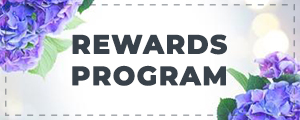| Chamaecyparis pisifera 'Golden Pin Cushion' | USDA Zone: 4-9 |
Golden Pin Cushion Falsecypress has attractive chartreuse foliage which emerges yellow in spring. The threadlike leaves are highly ornamental and turn lime green in fall.
A variety of threadleaf falsecypress with fine, yellow foliage that ages to a light green, giving an extremely fine texture; foliage is brighter yellow in full sun; ideal for color and texture contrast in the garden; grows very slowly.
Golden Pin Cushion Falsecypress is recommended for the following landscape applications;
- Accent
- General Garden Use
- Container Planting
Dwarf: 1-3″/year
Globe Shaped
Common Name: Falsecypress, Japanese Falsecypress, Sawara Falsecypress
|
Key Feature
|
Light Needs | Landscape Uses |
 |
 |
|
|
|
|
| More About Golden Pin Cushion Falsecypress |
| Height: 2-3 ft |
Spread: 2-3 ft |
|
Golden Pin Cushion Falsecypress will grow to be about 3 feet tall at maturity, with a spread of 3 feet. It tends to fill out right to the ground and therefore doesn't necessarily require facer plants in front. It grows at a medium rate. Golden Pin Cushion Falsecypress does best in full sun to partial shade. It prefers to grow in average to moist conditions, and shouldn't be allowed to dry out. It is not particular as to soil type, but has a definite preference for acidic soils. It is highly tolerant of urban pollution and will even thrive in inner city environments. Consider applying a thick mulch around the root zone in winter to protect it in exposed locations. Golden Pin Cushion Falsecypress makes a fine choice for the outdoor landscape, but it is also well-suited for use in outdoor pots and containers. Because of its height, it is often used as a 'thriller' in the 'spiller-thriller-filler' container combination; plant it near the center of the pot, surrounded by smaller plants and those that spill over the edges. It is even sizeable enough that it can be grown alone in a suitable container. Note that when grown in a container, it may not perform exactly as indicated on the tag - this is to be expected. Also note that when growing plants in outdoor containers and baskets, they may require more frequent waterings than they would in the yard or garden. Be aware that in our climate, most plants cannot be expected to survive the winter if left in containers outdoors, and this plant is no exception. NOTE: Some flowers and plants may be harmful or poisonous to people or pets if touched or ingested. If you require more information before placing an order, please let us know in advance. |









